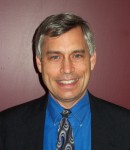非常抱歉,
你要访问的页面不存在,
非常抱歉,
你要访问的页面不存在,
非常抱歉,
你要访问的页面不存在,
验证码:

职称:Professor
所属学校:Boston University
所属院系:College of Arts & Sciences
所属专业:Astronomy
联系方式:353-5029
Professor Alan Marscher obtained his Ph.D in Astronomy at the University of Virginia in 1977 after completing his undergraduate work at Cornell University (B.S. in 1973) and Master’s degree at Virginia (1974). His thesis was a theoretical study of the synchrotron radiation from quasars and other active galactic nuclei (AGNs) when gradients in magnetic field and relativistic electron density are included. Prof. Marscher joined the Boston University faculty in 1981 after postdoctoral research positions at NASA’s Goddard Space Flight Center (sponsored by the National Research Council) and the University of California at San Diego. He served as chair of the Boston U. Department of Astronomy from 1986 to 1997, as associate dean for faculty in the College of Arts and Sciences from 1999 to 2003, and as director of the University’s Center for Excellence in Teaching from 2003 to 2007. Prof. Marscher’s research group studies the extremely energetic plasma jets that emanate from a class of AGN called “blazars” (radio-bright quasars and BL Lacertae objects, whose brightness tends to be highly variable and whose continuum spectra are non-thermal). Ultra-massive (over a billion solar masses in some cases) black holes residing at the centers of many galaxies power blazars as they accrete matter from their surroundings. The black holes swallow most of the gas and dust, but expel a small fraction in winds and jets of high-energy particles along the rotation axes, at flow speeds very close to the speed of light. Such relativistic motions create illusions of faster-than-light speeds and beams the radiation emitted such that observers viewing the jet almost along the axis measure a very high brightness that varies on timescales as short as hours or even minutes. Prof. Marscher’s group focuses on monitoring the changing brightness at radio, infrared, visible, ultraviolet, X-ray, and gamma-ray frequencies as well as the evolving radio-frequency structure of the jet on sub-milliarcsecond scales. Telescopes used currently include the Very Long Baseline Array (VLBA), the Global mm-VLBI Array, the Fermi Gamma-ray Space Telescope, the Rossi X-Ray Timing Explorer (RXTE), the Swift satellite, the Chandra X-ray Observatory, the Hubble Space Telescope, the Spitzer Space Telescope, the XMM-Newton X-ray observatory, Lowell Observatory’s Perkins Telescope, and various other ground- and space-based observatories. Currently, significant effort is being expended on multiwaveband observations the monitor the brightness, polarization, and images of the jets to correlate with the Fermi gamma-ray light curves from 33 blazars. Marscher’s group also engages in a theoretical program focused on the radiative processes and gas dynamics that occur in the jets of blazars. The main goal is to provide models that can be used to interpret multifrequency monitoring observations of blazars in the hopes of figuring out the physics of jets: what produces them (e.g., what evidence can we obtain that it is really an accreting supermassive black hole?), what focuses and accelerates their flows to speeds very close to the velocity of light (twisting magnetic fields, gas pressure, or radiation pressure?), what accelerates the electrons to ultrarelativistic energies (e.g., shock waves – transverse to the jet axis or oblique? turbulence?), and what processes affect the emission (bends in the jet, accelerations in the flow, precession?).
1992-present Professor of Astronomy, College of Arts and Sciences, Boston University 2013-present Associate Director, Core Curriculum, College of Ar ts and Sciences, Boston University 2011-present Director, Institute for Astrophysical Research, Bo ston University 2003-2007 Director, Center for Excellence in Teaching, Bost on University 1999-2003 Associate Dean, College of Arts and Sciences, Boston Univ ersity.1987-1997 Chairman, Department of Astronomy, Boston University 1987-1992 Associate Professor of Astronomy, Boston University 1986-1987 Chairman ad interim , Department of Astronomy, Boston University 1981-1987 Assistant Professor of Astronomy, Boston University